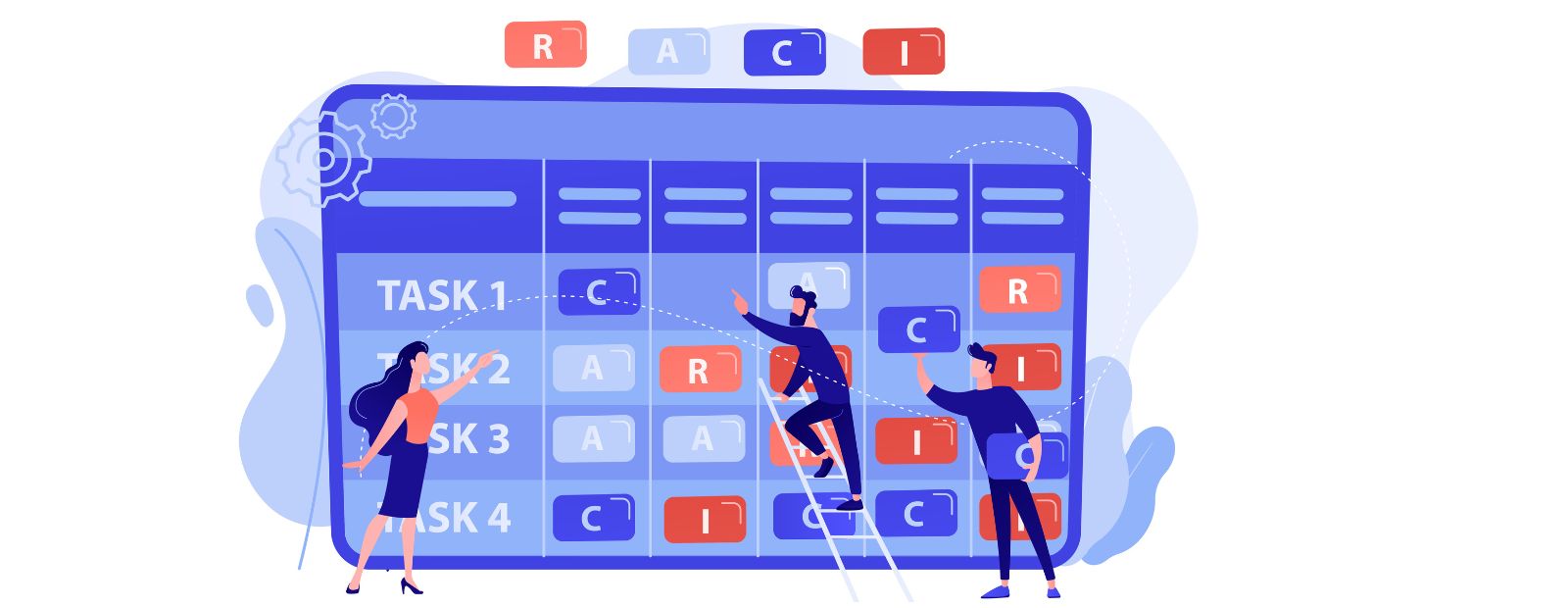Connect with us

Why Smart Revenue Management Beats Guesswork
The quarter felt settled. Your calls sounded crisp, the pipeline looked thick, and updates to the board stayed calm. Then two “locks” slipped, a renewal trimmed the scope, and the story flipped in a week. That swing wasn’t random; it came from choices built on anecdotes rather than observable signals. This article argues for a living model that listens to customers in real time and treats uncertainty as data, not drama. You’ll see how telemetry, probabilities, and shared definitions turn noise into guidance, and why results should feel earned, not lucky.
The Quarter That Went Sideways: A Mini Case To Open
You confidently called the number, only to watch committed deals slide and a renewal shrink at the finish line. The post-mortem pointed to a single root cause: decisions anchored in narrative, not in signals that could have warned you earlier. This is where customer revenue optimization comes in.
Confidence Without Evidence
Hero calls feel great in the moment, but lock you into a fixed outcome instead of a range. Under pressure, teams debate stories instead of interrogating signals, and minor judgment errors stack into big misses.
Pipeline Wasn’t The Problem, Signals Were
The top of the funnel was fine; decay lived inside deals that looked stable. An innovative approach to revenue management tracks sponsor activity, user adoption, and buyer alignment so your call mirrors what customers are doing, not what you hope they’ll do.
The Guesswork Tax: Five Hidden Leaks You Don’t See In Your CRM
You feel it as missed numbers, soft margins, and whiplash in weekly forecast calls, but the genuine cost hides between fields and dashboards. Shine a light on the leaks that quietly drain performance while the pipeline graph looks fine.
Hope-Casting vs. Sandbagging
Two classic distortions: padding deals to please leadership or lowballing to look like a hero later, skew decisions. When the culture rewards outcomes more than calibration, the forecast becomes theater, and the business loses learning velocity.
Discount Addiction And Margin Erosion
Discounts masquerade as a deal strategy, then calcify into buyer expectation. Without a price-volume-mix view, you trade long-term value for short-term relief and teach the market to wait you out.
Deal Decay From Idle Champions
Champions change roles, switch priorities, or go quiet after a proof of value. CRMs log the last touch, but not the dwindling influence map; if your stakeholder graph shrinks, deal probability should shrink alongside it.
False Positives In Trial Usage
A spike in logins or clicks looks promising until you zoom into feature-level depth and see aimless exploration instead of value moments. Treat early usage like smoke, not fire, until it links to outcomes that matter.
Renewal Myopia (Logo Saved, Value Lost)
You celebrate the renewal, then learn the customer trimmed seats and downgraded modules. Retention without health is a slow leak; it won’t sink you today, but will warp next year’s plan.
What “Smart” Really Means: From Gut Feel To A Living Revenue Model
Smart doesn’t mean robotic; your choices align with observed reality and update as that reality shifts. Think of a model that listens, learns, and adjusts, so you call the game you’re playing, not the one you wish you were.
Decisions Tied To Observable Signals
Tie plays to things you can measure: stakeholder coverage, product activation, executive sponsorship, support friction, and payment behavior. When decisions trace back to signals, you can audit, debate, and improve the logic instead of arguing opinions.
Probabilities, Not Absolutes
Replace “this will close” with “this is 60% in base, 30% upside, 10% downside.” A range with confidence unlocks better cash planning, hiring choices, and board conversations because you manage distributions, not dreams.
Human Judgment With Guardrails
People still matter; the model sets the boundaries. Allow reps and leaders to adjust probabilities rationally, then compare those edits to outcomes to improve judgment over time.
Revenue Quality Over Volume: Read NRR Like An Investor
Investors love net revenue retention because it tells a deeper story than bookings: are customers expanding, staying flat, or shrinking after the honeymoon ends? Treat Net Revenue Retention (NRR) as a quality lens that reveals the durability of your growth.
The NRR Compass
When NRR rises, your product earns more share of wallet without extra acquisition dollars. When it falls, it often signals shallow adoption, weak value communication, or packaging that doesn’t fit how customers grow.
Negative Churn Mechanics
Negative churn isn’t magic; it’s the math of expansions outpacing downgrades and churn. You get there by tying usage landmarks to right-fit add-ons, not by spraying bundles across the base.
When GRR And NRR Disagree
If logo retention holds while NRR dips, customers stay but buy less; that’s a value communication problem. If NRR grows while Gross Revenue Retention (GRR) falls, you’re playing musical chairs; expanding a few while losing too many.
Signal Graphs, Not Snapshots: Product And Customer Telemetry In Motion
Weekly dashboards freeze time, while signal graphs show direction and velocity. You don’t just need a number; you need to know whether it’s accelerating, flattening, or reversing.
Activation, Adoption, Expansion Triggers
Map the path from the first value to the sustained and expansion opportunities. Each step should have crisp events, like time-to-first-key-action or the breadth of active users, that flag whether the account is warming or cooling.
Feature-Level Leading Indicators
Aggregate usage can flatter to deceive; dig into the features that predict renewals and upsells in your product. If high-correlation features dip, the account’s risk should rise, even if total minutes stay lofty.
Executive Sponsor Drift
The strategic thread will fray if the sponsor who signed the deal stops attending QBRs or delegates updates down the ladder. Track meeting participation, email engagement, and calendar presence, not to police but to spot drift early.
Support Friction As A Lagging Echo
Ticket spikes, repeated categories, and time-to-resolution tell a story about perceived value and frustration. A run of “how do I” tickets often signals poor onboarding; a run of “why doesn’t it” tickets hints at fit or roadmap gaps.
A Full-Funnel Health Model: Marketing, Product, Sales, And CS On One Map
Silos skew your view; a unified map shows how intent becomes value and value becomes dollars. When teams speak a shared language, the same signals inform acquisition, conversion, adoption, and renewal.
Intent → Activation → Value Moments
Marketing’s job doesn’t end at the MQL; it starts a chain that only counts when value moments appear in the product. Align definitions so the top turns real when the middle lights up.
Deal Momentum And Stakeholder Coverage
Momentum isn’t a vibe; it’s the pace of meaningful steps and the breadth of influence. The model should automatically reduce deal probability if steps stall or roles narrow.
Adoption Depth And Breadth
Depth says the core team depends on you; breadth says the organization can’t live without you. Both matter: depth drives renewal, breadth drives expansion.
The Three Clocks Of Revenue: Cycle, Time-To-Value, And Payback
Every business runs on three clocks that rarely tick at the same speed. Your job is to align them well enough that growth doesn’t outrun cash or patience.
Sales Cycle Clock
This metric is your speed to signature, shaped by price, complexity, and stakeholder count. If you shorten it without damaging deal quality, working capital breathes easier.
Time-To-Value Clock
This metric measures how long a new customer can feel a real benefit, not just finish the setup. Shrink this window, and renewals start on a firmer footing.
Payback Period Clock
This metric is when you spend dollars to win a customer who comes home. If payback lags while cycles lengthen, you’re borrowing tomorrow’s freedom for today’s headline.
Forecasts With Error Bars: Make Uncertainty An Input, Not An Excuse
Forecasts aren’t promises; they’re distributions. Leaders should treat uncertainty as a first-class citizen to set plans that absorb surprises.
Calibrated Confidence, Not Overconfidence
Track forecast accuracy by segment, stage, and rep to learn who’s hot, cold, and where the model is biased. Calibration is a skill you can train if you measure it.
Range-Based Commit Guidance
Commit a base, upside, and downside with triggers that move you between them. You’re not hedging; you’re describing reality as it unfolds.
Variance Attribution After The Fact
When the quarter closes, tag each beat or miss to specific causes, stakeholder loss, pricing friction, usage dip, or macro push. Over time, those tags become the blueprint for better calls.
Revenue QA: Postmortems That Actually Change Next Quarter
Swap blame games for systematic learning so each miss buys you fewer misses later. Treat reviews as a lab where you upgrade plays, not a courtroom where you assign guilt.
Signal-To-Decision Traceability
Recreate the trail from signals to choices to outcomes. If a decision lacked the right signals, fix the inputs; if the signals were correct but the call was wrong, adjust the rule.
From Anecdote To Pattern
Collect stories but code them into categories, such as sponsor churn, procurement delay, and competitor pressure, so that you can see frequencies and correlations. Patterns beat punchlines.
Playbook Updates With Dates And Owners
Every insight should spawn an experiment with an owner, start date, and success metric; learning compounds when scheduled, not when it’s inspirational.
Expansion Is A Strategy, Not Luck: PLG Signals And CS Plays
Upsells shouldn’t depend on charming timing or heroic follow-ups. Instead, tie product-led cues to customer success motions so expansion becomes predictable.
Usage Landmarks That Precede Upsell
Identify the behaviors that usually occur before customers buy more, like cross-team invites, API calls, or report exports. When those lights blink, surface the right offer, not a generic nudge.
Champions, Communities, And Social Proof
Champions thrive when they feel part of a community with peers, templates, and wins to showcase. Social proof inside the product, badges, benchmarks, and shared dashboards, turn private love into public momentum.
Adoption Plateaus And Revive Plays
Most accounts stall at natural plateaus. Use targeted enablement, fresh value stories, or micro-pilots to help them climb the next ridge.
Pricing Isn’t A Number, It’s A Feedback Loop (Price-Volume-Mix)
Treat monetization like product work: experiment, observe, and adjust. Price, packaging, and value metrics evolve as your customers and segments evolve.
Signal-Driven Packaging Changes
Package around outcomes customers recognize, not internal module names. If bundling lifts adoption of a must-have feature, lean into the pattern; if it hides value, unbundle and clarify.
Value Metrics vs. Vanity Metrics
Charge on the unit that tracks with benefit, records processed, seats in active use, and transactions cleared. Vanity metrics look tidy on paper but confuse customers in practice.
Willingness To Pay From Behavior
Stated preference is nice; revealed preference is money. Watch where customers hit limits, upgrade without prompting, or ask for add-ons they tried informally.
Metrics That Matter: A Shortlist You Can Actually Run
You don’t need a wall of numbers; you need a dashboard that pushes decisions forward. Keep the set small, comparable, and actionable.
NRR, GRR, And Logo Retention
Together, these tell you whether customers stay, pay the same, or pay more. Track them by cohort so you separate healthy growth from a one-time surge.
CSM Capacity And Coverage
Match account health and potential to attention, not alphabet. Capacity gaps are delayed QBRs, slow risk response, and soft expansions.
Leading vs. Lagging Indicators
Celebrate revenue, but run the business on inputs that move revenue. Leading metrics, adoption depth, stakeholder map breadth, and executive touch let you act before the quarter ends.
Building The Smart Stack: Data, Controls, And Human Judgment
Tools help, but shared definitions and clear contracts make the stack dependable. Give people the right signals and the latitude to act with context.
Shared Definitions Beat Dashboard Sprawl
If “active user” means three things, your arguments never end. Align on a glossary and lock it, so analysis debates what’s happening, not what words mean.
Signal Pipelines And Data Contracts
Document where each signal comes from, how often it updates, and what “good” looks like. When contracts break, the team knows who fixes what and by when.
Human-In-The-Loop Decisions
Automate the routine and spotlight the ambiguous. The stack should ask leaders for judgment where context matters most and record those calls for future learning.
Closing The Loop: Guess Less, Learn Faster
Guesswork won’t disappear, but it doesn’t have to run your quarter. Surprises shrink when you tie choices to signals, treat uncertainty as a range, and learn out loud. Your model watches usage, sponsors, and sentiment; your team debates probabilities, not hunches. NRR becomes a quality check, pricing becomes a feedback loop, and expansions follow real value. The payoff is quieter forecasts and sturdier growth. Trade swagger for proof. Choose a game you can measure, adjust fast, and win on purpose; one clear decision at a time, across markets and deal cycles.








